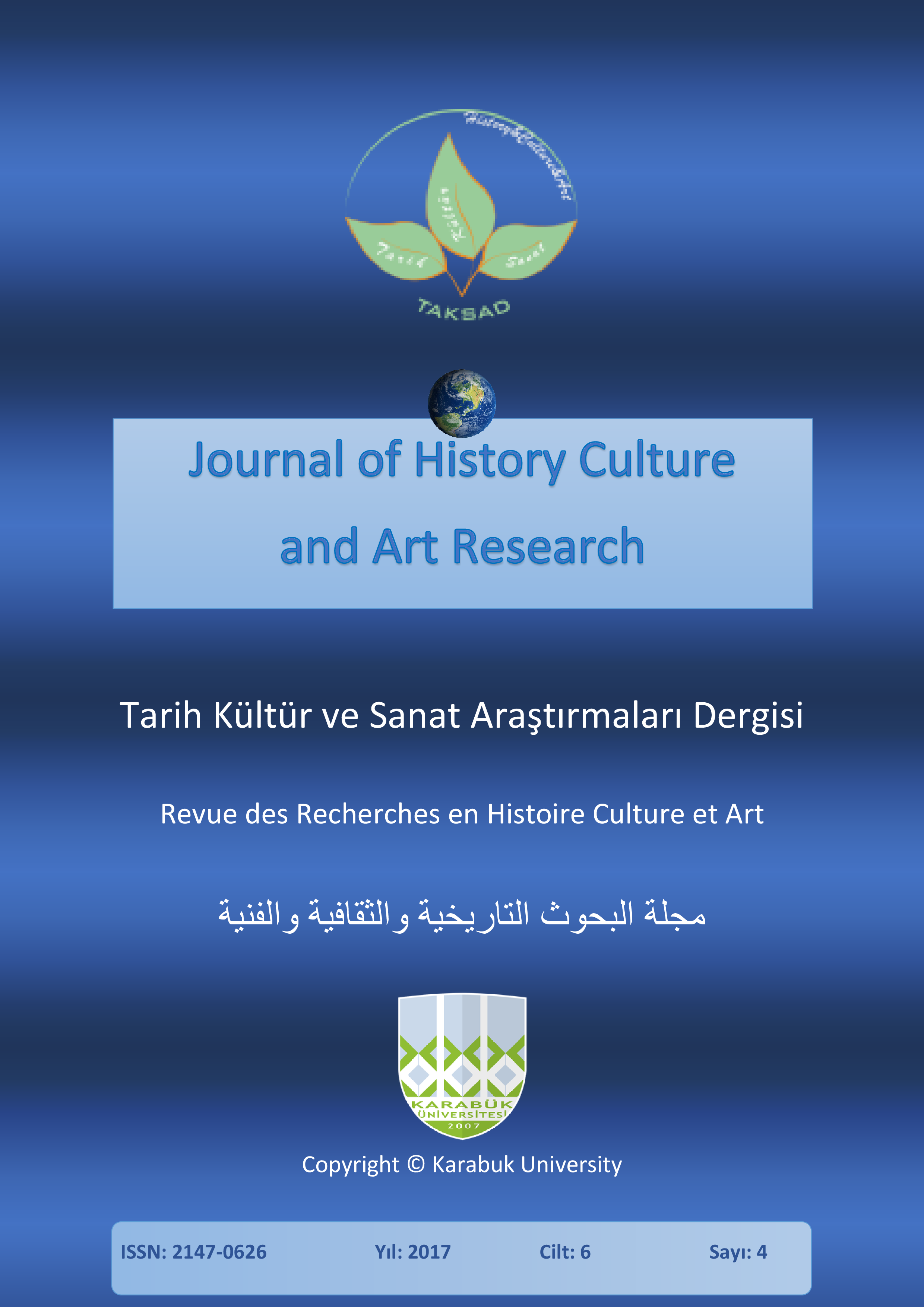Specifics of Cultural-Civilization Identity Development in the Frontier Regions of Russia and Ukraine: Diagnostic Problems
DOI:
https://doi.org/10.7596/taksad.v6i4.1177Keywords:
Cultural and civilizational identity, Monitoring, Border region.Abstract
This study analyzes the process of cultural and civilizational identity development in the border regions of Russia and Ukraine. The definition of a cultural-civilizational identity as a kind of macrosocial supra-ethnic identity is presented. A cultural-civilizational identity is a structure of self-consciousness that connects subjectively realized and experienced values, state and cultural symbols, attitudes, relations, assessments and norms of a supra-ethnic community. They prove that in order to understand the content of cultural and civilizational identity development in the border regions of Russia and Ukraine, the concept of political and cultural delimitation has a heuristic potential according to which the process of definition and delineation of adjacent geopolitical entity. This process consists in the development and distribution of stable notions about the specifics of their political and cultural systems among population. According to the materials of empirical study conducted in the border regions of Russia and Ukraine, (n = 1000, 2015), it is argued that the identification processes in the border regions of Russia and Ukraine do not primarily stimulate the restoration of the former high level of social space homogeneity. They separate more than unite the people of the borderland close by their cultural characteristics. The concept of identification process monitoring is proposed in the border regions of Russia and Ukraine.
References
Adler, A. (2011). Social Interest: A Challenge to Mankind. Faber and Faber Ltd.
Babintsev, V. P; Reutov, E. V. & Sapryka, V. A. (2015). Political and cultural delimitation of border regions of Russia and Ukraine in expert community assessments. Regionology, (1), 45-56.
Bilig, М. & Tajfel, Н. (1973). Social categorization and similarity in interrupt behavior. European Journal of Social Psychology, (3), 21-29.
Bljaher, L. E. (1997). A man in the mirror of social chaos. GSTU Publishing House.
Brown, R. W. & Kottler, J. A. (2001). Introduction to Therapeutic Counseling Voices from the Field. Brooks Cole.
Civilization identity of Russia: essence, structure and mechanisms. The issues of social theory, 4(2).
Degtyarev, A. K. (2016). National identity and the perspectives of Ukrainian statehood. Scientific bulletins of the Belgorod State University. Philosophy. Sociology. Law [Belgorod State University Scientific bulletin. Philosophy. Sociology. Law], (24), 66-71.
Erikson, E. (1996). Identity: youth and crisis. W.W. Norton & Co.
Freud, A. (1936). Das Ich und die Abwehrmechanismen. Fischer Taschenbuch.
Freud, S. (1921). Group Psychology and the Analysis of the Ego. Internationaler Psychoanalytischer Verlag.
Fromm, E. S. (2014). To Have or to Be? W.W. Norton & Co.
Golofast, V. B. (1995). The diversity of biographical narratives. Sociological Journal, (1), 71-88.
Hogg, M. A. (2014). From uncertainty to extremism: Social categorization and identity processes. Current Directions in Psychological Science, (23), 338-342.
Horney, K. (1942). Self-Analysis. W.W. Norton & Co.
Jung, C. G. (2009). The Red Book. W.W. Norton & Co.
Kachanov, Ju. L. & Shmatko, N. A. (1993). Semantic spaces of social identification. In: "Social identification of an individual". V.A. Zhadov, "Institute of Sociology".
Moscovici, S. (1984). The Phenomena of Social Representation. Cambridge University Press.
Rapaport, D. (1967). The conceptual model of psychoanalysis. Basic Books.
Sapryka V. A. (2016). Integration models of border and interregional cooperation in new geopolitical terms. Scientific bulletins of the Belgorod State University. Philosophy. Sociology. Law [Belgorod State University. The Scientific bulletin. Philosophy. Sociology. Law], (24), 56-60.
Sapryka, V. A.; Babintsev, V. P.; Babintseva H. I. & Pastyuk, A.V. (2015). Peculiarities of the social chronotypes of the boundary regions of Russia and Ukraine. The Social Science, (10), 1116-1118.
Sidorenko, S. A. (1993). "Subclass" or the social bottom of Russia. In: What are the ways of Russia development? Alternatives to social development. Eds., T.I. Zaslavskaja, L.A. Arutjunjan, Aspekt-Press, pp: 179-183.
Sorokin, P. (1999). Man, civilization, society. Politizdat.
Sullivan, H. S. (1964). The Fusion of Psychiatry and Social Science. W.W. Norton & Co.
Tajfel, N. (1981). Human groups and Social categories: Studies in Social. Cambridge University Press.
Turner, J. (1985). Social categorization and the self-concept: a social cognitive theory of group behavior. Advances in Group Processes, (2): 77-121.
Downloads
Published
How to Cite
Issue
Section
License
All papers licensed under Creative Commons 4.0 CC-BY.- Share — copy and redistribute the material in any medium or format
- Adapt — remix, transform, and build upon the material for any purpose, even commercially.
Under the following terms:
Attribution — You must give appropriate credit, provide a link to the license, and indicate if changes were made. You may do so in any reasonable manner, but not in any way that suggests the licensor endorses you or your use.
- No additional restrictions — You may not apply legal terms or technological measures that legally restrict others from doing anything the license permits.







